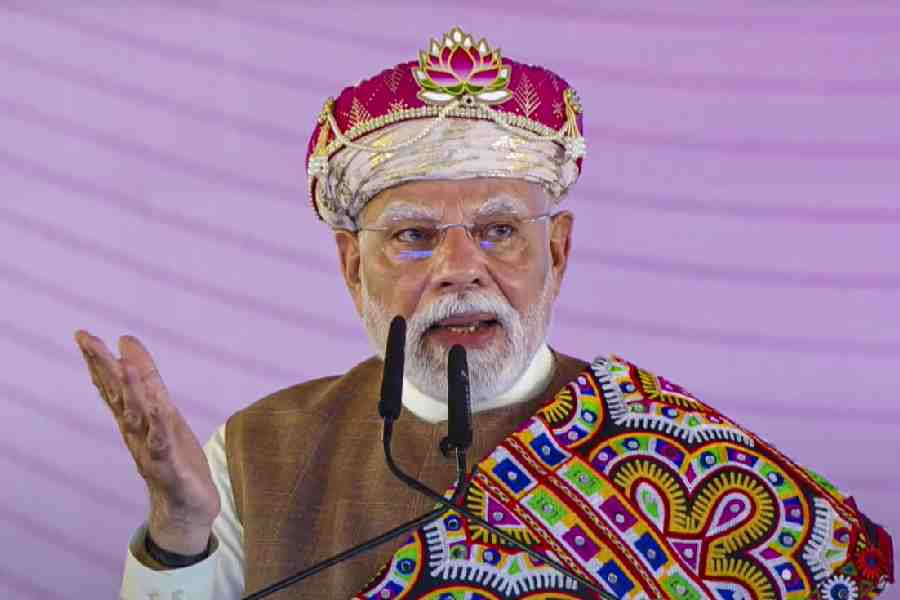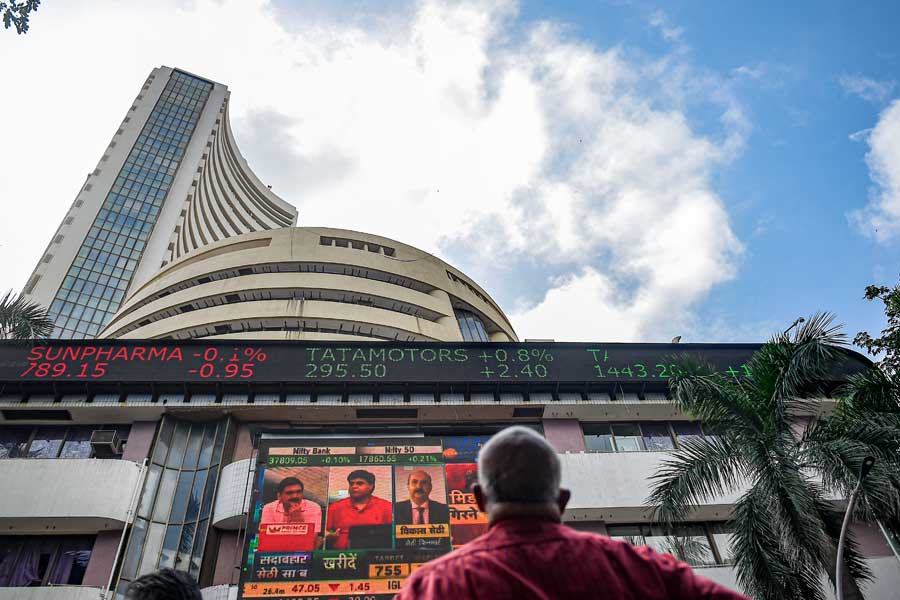Rise and rise of an Indian Blade runner

Brilliant multimedia artist Nayan Kulkarni is being hailed as “the new Anish Kapoor” after his dramatic artwork — a 75 metre (250 feet) wind turbine blade manufactured locally in Yorkshire by the German firm, Siemens — was installed in the city of Hull.
Blade, which will remain in place until March 18, catapults Hull — and especially Kulkarni — onto the world stage.
It required a major engineering feat to transport and then manoeuvre the 28-tonne fibreglass Blade, as the installation is called, diagonally across Queen Victoria Square in the centre of Hull — which has been decreed the “UK’s City of Culture 2017”.
“I am a classic child of the diaspora,” Kulkarni told me. “My father, Deepak Kulkarni, was an architect from Bombay who worked all over the world. My mother is from the Wirral. I was born in Norwich in 1969.”

The Blade is positioned a metre from the ground at one end rising to 5.5 metres at the other, “allowing a double-decker
bus to pass underneath”.
The Blade recalls Anish Kapoor’s 500-foot sculpture, Marsyas, which filled the gigantic Turbine Hall at Tate Modern in 2002.
Siemens UK chief executive Juergen Maier applauded Kulkarni’s “dramatic, unique installation. It feels perfect that Blade — one of hundreds of 75 metre blades we will manufacture in Hull every year — will be a prominent feature during Hull’s City of Culture season.”
Martin Green, director Hull 2017, commented: “This is a structure we would normally expect out at sea and in a way it might remind you of a giant sea creature, which seems appropriate with Hull’s maritime history.”
Kabuliwala retold

The stage version of Khaled Hosseini’s The Kite Runner — the bestselling novel came out in 2003, the film in 2007 — had
its press night at London’s Wyndham Theatre last week.
The adaptation by Matthew Spangler seemed to me at times almost a modern retelling of Tapan Sinha’s classic 1957
film, Kabuliwala.
What we get is the story of Afghanistan, taking in the overthrow of the king, the arrival of the Russians, the Taliban tyranny and consequences of 9/11, told through the tragic tale of two boyhood friends although master and servant — Amir, who is Pashtun and Sunni, and Hassan, who is Hazara and Shia.
There are flashes of black humour. We learn later Hassan’s father “was killed in a landmine blast... I don’t think there’s a more Afghan way to die than stepping on a mine”.
I agreed mostly with one reviewer who said that this was “an enthralling tale beautifully told, at once topical and emotionally resonant”.
Not since Ayub Khan Din’s East Is East in 1996 have I seen a play as moving as this — the kite flying and cutting scenes recalled Patna days, of course.
Ramanujan on air
On the inspiring BBC Radio 4 series, Great Lives, the choice of the contemporary Bangladeshi-origin dancer Akram Khan, last week, was the mathematical genius, Srinivasa Ramanujan.
Acting as “expert witness” was mathematician Robin Wilson, a former Oxford University lecturer and emeritus professor in the department of mathematics at the Open University.
They told presenter Matthew Parris of Ramanujan’s spiritual qualities and reliance on his Goddess, Namagiri.
Wilson, who has visited Ramanujan’s home in Tamil Nadu, called him “probably one of the most if not the most intuitive mathematician of all time”.
Obituary writing
We used to call them “set and keep” on The Daily Telegraph — obituaries of famous people written in advance ready for use when needed.
Blanks were then filled in: “X who has died, aged Y...” That is why last week the paper felt able to run 3,700-word, full-page obits of the former Iranian President, Ali Akbar Hashemi Rafsanjani, and the legendary war correspondent, Clare Hollingsworth, who died aged 82 and 105 respectively.
I knew them both, Rafsanjani better than Clare. Although she broke the outbreak of World War II as a “stringer” for The Daily Telegraph, she wasn’t given a staff job till decades later.
Incidentally, when one obituaries editor retired, his colleagues told him: “Sandy, people were always dying to get into your columns.”
Berlin test
The Berlin film festival will be a big test for Gurinder Chadha — her Viceroy’s House (“the true story of the final months of British rule in India”), with Hugh Bonneville and Gillian Anderson as Lord and Lady Mountbatten, and the late Om Puri in a cameo, will premiere on February 12.
Gurinder will be hoping to repeat the success of Bend It Like Beckham from 2002.”
Tittle tattle
The Financial Times columnist, Lucy Kellaway, has initiated the Golden Flannel Awards “for horrible use of language in business”, mostly from corporate PRs.
“Take the intriguing reintroduction of ‘unfeigned regards’ — last big in the 18th century and now found on emails from Indian help centres,” she noted.











